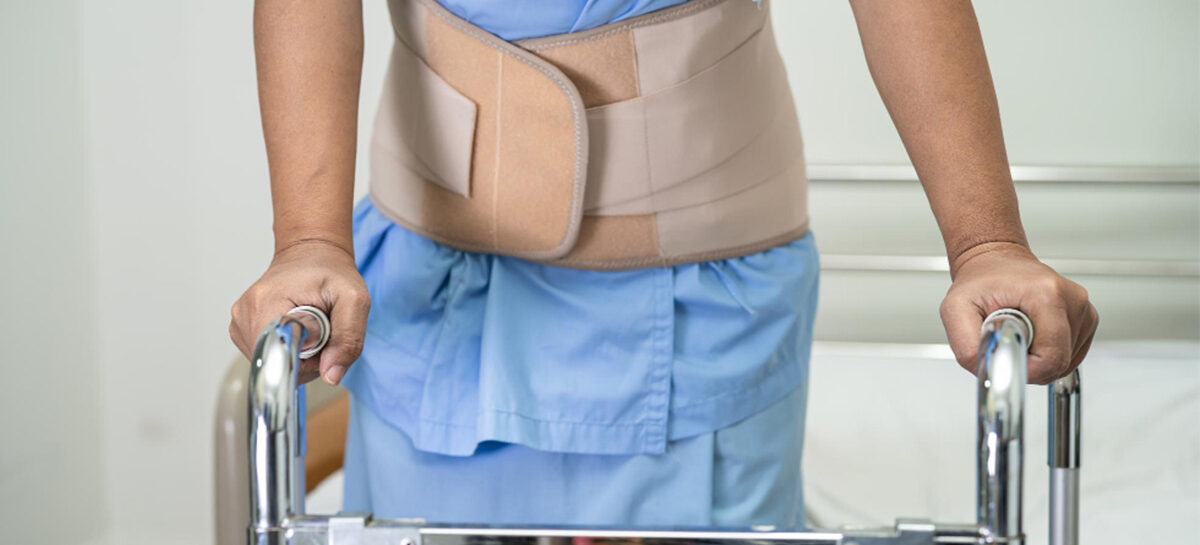Spinal Fractures from Osteoporosis - Diagnosis and Treatment
 In an earlier article, we have explored treatment options for Osteoporosis in general. As mentioned there, Osteoporosis can cause fractures of the spine, wrist and hip. In this article, we will explore spinal fractures specifically.
In an earlier article, we have explored treatment options for Osteoporosis in general. As mentioned there, Osteoporosis can cause fractures of the spine, wrist and hip. In this article, we will explore spinal fractures specifically.
The spine is made up of 33 small bones called vertebrae that are stacked on top of each other. The gaps in them forms a tunnel called the spinal canal or column that houses the spinal cord and nerves originating from the same. Intervertebral discs provide cushioning and shock absorption.
Spinal Fractures
The vertebrae are oblong or slightly rectangular in section. However, in patients with Osteoporosis, the bones become flat and thin. The person appears shorter, and the back develops a bend. Further, the weakened bones are vulnerable to a fracture.
- When somebody has a nasty fall, he/she develops what is called as a compression fracture where one or more vertebrae breaks into 2 pieces or develops cracks. But in patients with Osteoporosis, anything that slightly puts pressure on the vertebrae can cause a compression fracture. This includes lifting small weights, stretching or reaching out for something, coughing, sneezing, even rising and waking in rare cases.
- Another type of fracture is a vertical burst fracture, which generally happens in severe motor-vehicle accidents and to people with Osteoporosis. Here, the bone breaks into multiple pieces similar to a burst or explosion.
- The 3rd type of Spinal fracture is Flexion-distraction fracture which happens generally due to accidents and rarely due to Osteoporosis.
Also Read: Screening and early Intervention for Spinal Deformities
Diagnosis
A doctor will conduct one or more of the below to understand the fracture better.
- X-ray: A simple X-ray scan is done if the doctor suspects a compression fracture.
- MRI Scan: This will show the damage to soft tissue around the bones such as nerves and discs. It also reveals age of the fracture. A new fracture is followed by inflammation of the bone tissue which appears brighter in the scan compared to older fractures or normal bone.
- Bone scan: This will show any abnormal activity in the bone. In case of a fracture, it will show whether it’s a simple or compound fracture.
- CT Scan: This can show both bone and soft tissue. This is used to check if the fracture has extended to the spinal column, and if any nerves or nerve roots are damaged.
- DEXA scan: Also called Bone Mineral Density test, this helps understand the extent of Osteopenia, which is a precursor to Osteoporosis. The results will help determine the future course of Osteoporosis treatment, once the fracture is treated.
Also Read: Factors that affect Bone Health
Treatment
• Non-surgical: When the compression fracture is not severe, the person may be advised plenty of rest and some mild painkillers prescribed. In some cases, the person may be asked to wear braces or flints, in order to immobilize the affected area and hasten recovery. This treatment is carried out for 10 to 12 weeks (3 months) which is good enough to heal the fracture. The doctor will repeat some of the above tests to confirm the health of the bone.
• Kyphoplasty: This is a new and radical method of fixing vertebral fractures caused by Osteoporosis or other reasons. Here, a fine needle is inserted into the fractured bone, with the guidance of X-ray. Then the surgeon inserts a special balloon called balloon tamp into the needle. The balloon is then inflated, which props up the fractured bone to its original position and shape. The balloon is then deflated and removed carefully. This leaves behind a cavity in the bone. The cavity is then filled with a special bone-setting cement through the needle. Afterwards, the needle is withdrawn and the small incision in the skin is stitched up. The procedure is done under local anesthesia, with the patient lying face-down on the bed.
• Vertebroplasty: This procedure is similar to Kyphoplasty. However, here, no balloon tamp is used to create a cavity. The cracks in the bone are filled with bone-setting cement by directly injecting them through the catheter. The cement seals off the cracks and cavities and prevents the bone from collapsing again. The procedure is done under local anesthesia, with the patient lying face-down on the bed. Once the procedure is over the needle is withdrawn and the small incision in the skin is stitched up.
Also Read: How much time does a broken bone take to heal?
Surgical options carry the risk of bleeding, nerve injury, stiffness in the area and infection. However, doctors are aware of this and will do the necessary intervention. No overnight stay is required for any of the above methods unless the person is suffering from hypertension and heart issues. During recovery, the patient must undergo physiotherapy for 6 weeks and wear braces for 6-12 weeks. Depending on the severity of Osteoporosis, healing will happen quickly or slowly, however certain precautions must be taken, rest of the life.
Kauvery Hospital is globally known for its multidisciplinary services at all its Centers of Excellence, and for its comprehensive, Avant-Grade technology, especially in diagnostics and remedial care in heart diseases, transplantation, vascular and neurosciences medicine. Located in the heart of Trichy (Tennur, Royal Road and Alexandria Road (Cantonment), Chennai, Hosur, Salem and Bengaluru, the hospital also renders adult and pediatric trauma care.
Chennai – 044 4000 6000 • Trichy – Cantonment – 0431 4077777 • Trichy – Heartcity – 0431 4003500 • Trichy – Tennur – 0431 4022555 • Hosur – 04344 272727 • Salem – 0427 2677777 • Tirunelveli – 0462 4006000 • Bengaluru – 080 6801 6801
- Nov 28, 2022
